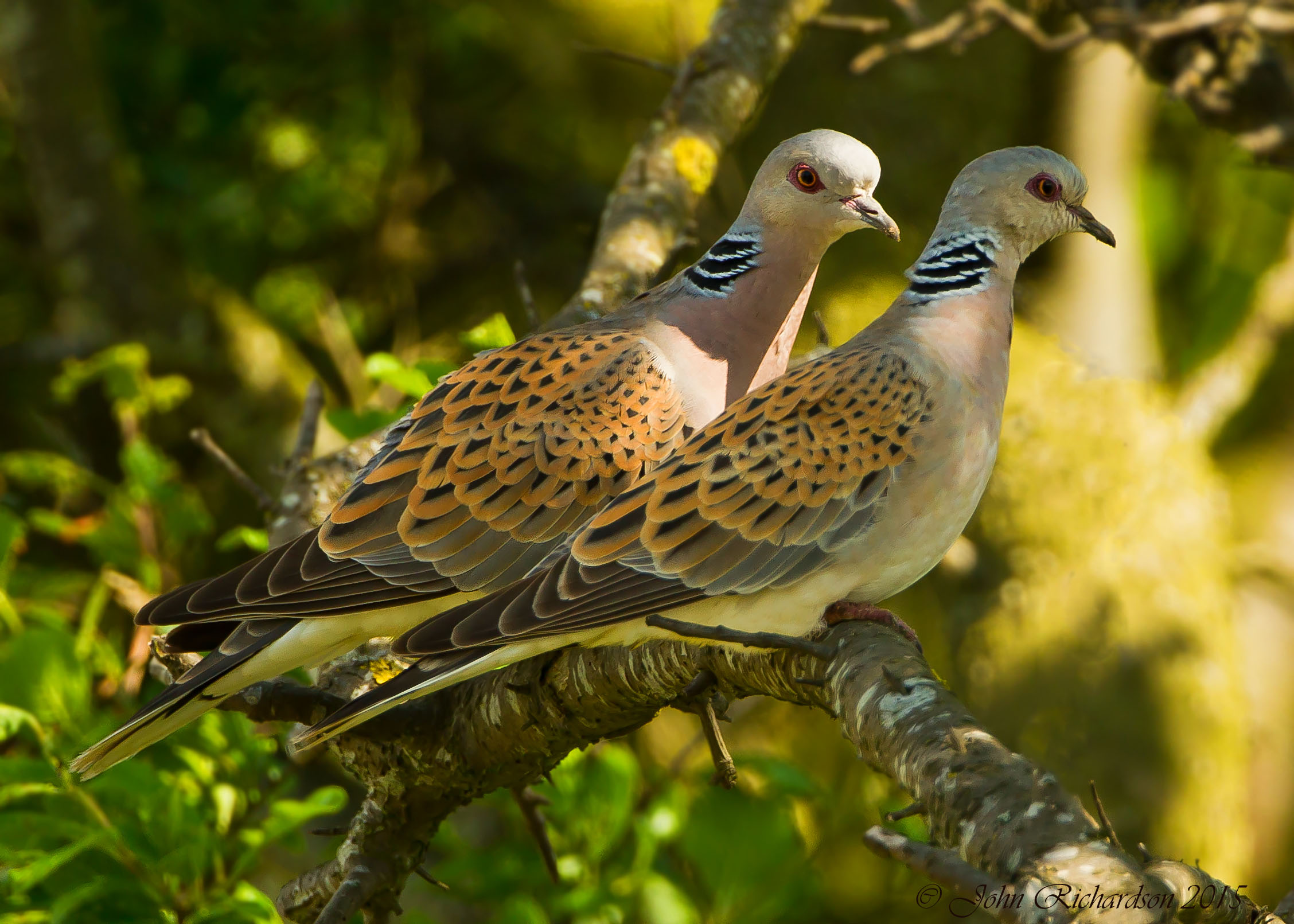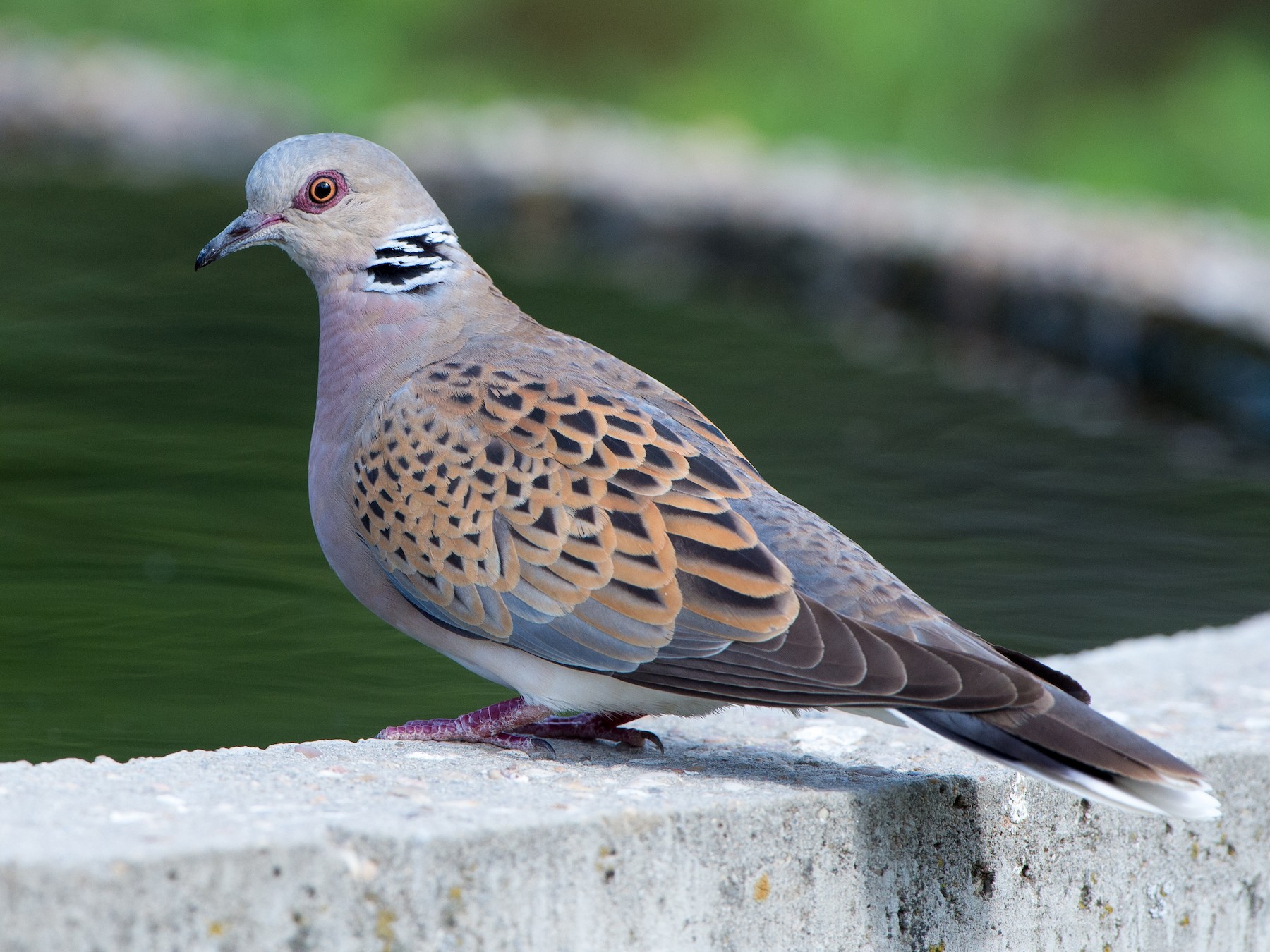Among the many birds that grace our skies, the turtle dove holds a special place in hearts and minds. Known for its gentle cooing and distinctive appearance, this small bird has been a symbol of love and faithfulness for centuries. Yet, as the years pass, its presence in the wild is fading. In this article, we'll explore the world of the turtle dove, its habits, and the challenges it faces today.
While the turtle dove might seem like a common bird, its population is shrinking at an alarming rate. The reasons behind this decline are varied, but understanding them is key to helping this beautiful creature thrive once more. As we delve into the life of the turtle dove, you'll discover how intertwined its story is with the landscapes it calls home.
From its unique features to its symbolic role in literature and culture, the turtle dove is more than just a bird. It's a reminder of the delicate balance between nature and human activity. So, let's take a closer look at this charming bird and what we can do to ensure it remains a part of our world.
Table of Contents
- Why is the Turtle Dove Endangered?
- What Does a Turtle Dove Look Like?
- Turtle Dove Habitats
- How Do Turtle Doves Migrate?
- What Do Turtle Doves Eat?
- Turtle Dove Symbolism
- Turtle Dove vs Mourning Dove
- Can We Help Turtle Doves?
Why is the Turtle Dove Endangered?
One of the most pressing questions about the turtle dove is why it's in such peril. The answer lies in a mix of factors. Habitat loss, changes in farming practices, and hunting all play a role in its declining numbers. The bird relies on specific environments that are becoming harder to find. For example, farmland with hedgerows and scattered trees used to be a haven for turtle doves. Now, these areas are shrinking, leaving the birds with fewer places to nest and feed.
It's almost like the turtle dove is caught between a rock and a hard place. Its survival depends on a balance that's tipping against it. Yet, organizations like the RSPB are working tirelessly to reverse this trend. Through conservation efforts and raising awareness, there's hope that the turtle dove can make a comeback. But, as they say, it's going to take a bit of effort from all of us to see that happen.
What Does a Turtle Dove Look Like?
When you picture a turtle dove, you might imagine a small bird with a unique pattern. Its back and wings are mottled brown with black edges, creating a scaly appearance. The turtle dove's wings are warm cinnamon, with a white and black collar stripe that sets it apart. Unlike the mourning dove, which tends to be brownish to shiny tan with black patches, the turtle dove has a more vibrant color palette.
So, what makes the turtle dove stand out? Well, it's not just the colors but the overall look. It's a bit smaller and slimmer than other doves, making it easy to spot if you know what to look for. Plus, its distinctive cooing sound is something you won't forget once you hear it. It's kind of like the bird's calling card, letting you know it's nearby.
Turtle Dove Habitats
The turtle dove prefers wooded and semi-open areas, especially those with farmland and heath. Hedges and scattered trees provide the perfect environment for nesting and feeding. You might see them perched on utility wires or flitting about in flight. They're often found in places where they can feed on the ground, sometimes mingling with other pigeons.
Interestingly, turtle doves have a knack for finding spots that suit their needs. They're not just any bird; they're picky about where they settle down. This preference for specific habitats is part of what makes them so vulnerable to changes in the landscape. When these areas disappear, the turtle dove has nowhere to go. It's a bit like losing your favorite coffee shop; sure, you can find another, but it's not quite the same, is it?
How Do Turtle Doves Migrate?
Migration is a crucial part of the turtle dove's life. These birds travel long distances between their breeding grounds in Europe and their wintering areas in Africa. The journey is tough, but it's something they've been doing for generations. During their migration, they rely on specific stopover points to rest and refuel.
Now, you might wonder how they manage such a trip. Well, it's all about timing and instinct. They tend to migrate at night, using the stars to guide them. Along the way, they face challenges like harsh weather and predators. But despite these obstacles, they keep going, driven by the need to find food and a safe place to breed.
What Do Turtle Doves Eat?
When it comes to food, turtle doves have a particular taste. They feed on seeds, particularly those from wild plants like fumitory, clover, and vetches. Unlike mourning doves, which forage on the ground for a variety of seeds, turtle doves are a bit more selective. They prefer smaller seeds that they can easily pick up from the soil.
It's kind of like how some people prefer pizza over burgers; it's all about what suits them best. This preference for certain seeds is important because it affects their ability to find enough food. If the plants they rely on aren't available, it can impact their health and survival. That's why maintaining diverse habitats is so crucial for their well-being.
Turtle Dove Symbolism
Throughout history, the turtle dove has held symbolic meaning. In Christianity, it's often associated with love and faithfulness. This connection stems from the bird's habit of mating for life and working together to build nests and raise their young. Artists and writers, from Shakespeare to Buddy Holly, have immortalized the turtle dove in their works, highlighting its significance.
For instance, the Song of Solomon mentions the turtle dove as a sign of spring. It's a beautiful image, linking the bird to the renewal of life and the changing seasons. These cultural references show just how deeply the turtle dove is woven into our collective consciousness. It's not just a bird; it's a symbol of enduring relationships and the beauty of nature.
Turtle Dove vs Mourning Dove
It's easy to confuse the turtle dove with the mourning dove, especially since they're both members of the dove family. However, there are distinct differences between the two. The mourning dove is generally larger and has a brownish to shiny tan color with black patches on its wings and tail feathers. They also feed on a wider variety of seeds, often foraging on the ground.
On the other hand, the turtle dove is smaller and slimmer, with warm cinnamon wings and a white and black collar stripe. Their preference for specific seeds and habitats sets them apart. While both birds coo, the sound of the turtle dove is distinctive, often described as a purring song. It's these little differences that make each bird unique and worth appreciating.
Can We Help Turtle Doves?
The good news is that we can all play a part in helping the turtle dove. By supporting conservation efforts and being mindful of our impact on the environment, we can create better conditions for these birds. Simple actions, like planting wildflowers or reducing pesticide use, can make a big difference.
Anyway, it's important to remember that the turtle dove's survival isn't just about the bird itself. It's about the health of the ecosystems it depends on. By taking steps to protect these environments, we're not just helping the turtle dove; we're supporting countless other species that call these places home. So, next time you hear that gentle coo, take a moment to appreciate the effort it takes to keep that sound alive.
Summary
The turtle dove is a bird with a rich history and a challenging present. From its unique appearance and cooing sound to its role in culture and literature, it's a bird worth knowing. However, its population is declining due to habitat loss and other factors. By understanding its needs and taking action, we can help ensure that the turtle dove remains a part of our world. It's a small bird with a big impact, and its story is far from over.



Detail Author:
- Name : Filomena Bashirian
- Username : amccullough
- Email : rosalee.vandervort@balistreri.biz
- Birthdate : 1974-08-17
- Address : 63607 Clifton Course Suite 653 West Melodyfurt, NY 89631-5616
- Phone : 1-820-678-3854
- Company : Ferry, Roberts and Shanahan
- Job : Nuclear Engineer
- Bio : Ad sunt vel similique voluptas et placeat. Modi sunt eius sed maxime. Recusandae a cupiditate maxime id.
Socials
twitter:
- url : https://twitter.com/travon.zulauf
- username : travon.zulauf
- bio : Ut omnis doloremque magnam. Sint qui ex in nam ipsum quibusdam sunt magni. Quo in autem eum voluptate voluptatibus minima.
- followers : 4739
- following : 2074
tiktok:
- url : https://tiktok.com/@travon.zulauf
- username : travon.zulauf
- bio : Ipsa odio suscipit voluptatum aut non sit. Earum culpa aut quia assumenda aut.
- followers : 2976
- following : 952
linkedin:
- url : https://linkedin.com/in/tzulauf
- username : tzulauf
- bio : Id laudantium ab aut in corporis aut incidunt.
- followers : 3410
- following : 1800
instagram:
- url : https://instagram.com/tzulauf
- username : tzulauf
- bio : Molestiae quam iusto autem autem. Et maiores assumenda ex ipsum numquam labore et ab.
- followers : 3428
- following : 1796